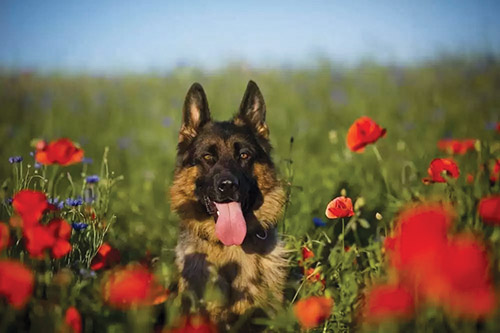By Kellie Tickner, Orchard Hills Veterinary Hospital Administrator
WHILE April 25 is a day of national remembrance for Australians and New Zealanders who served and gave their lives in times of conflict, peacekeeping operations and war, there’s a lesser-known story we don’t always tell on ANZAC Day. That of the service animals who stood alongside our men and women – many of whom never made it home.
From the loyal dogs who served as messengers and companions to the courageous horses who carried soldiers into battle, animals have been an integral part of wartime efforts. They provided comfort, transported vital supplies, and even served as mascots, offering a sense of morale and companionship amidst the chaos of war.
During the First World War alone, more than 16 million animals served alongside soldiers from various nations. Cats, dogs, horses, birds, camels, and mules all played crucial roles in supporting troops on the front lines. These unsung heroes were often the silent companions who stood by soldiers, offering unwavering loyalty and support in the face of danger.
Dogs, known for their loyalty and intelligence, served in a variety of roles during wartime. From delivering messages across treacherous terrain to guarding soldiers and detecting explosives, dogs proved to be invaluable assets on the battlefield. Their keen senses and unwavering dedication saved countless lives and provided comfort to soldiers in the midst of war’s horrors.
Horses, particularly the sturdy Waler breed favoured by the Australian Imperial Force, were essential for transportation and logistics during World War I. These noble animals endured gruelling conditions, carrying soldiers, equipment, and supplies across vast distances. Their resilience and strength played a vital role in the success of military operations, despite the hardships they faced.
Pigeons, with their remarkable homing instincts and speed, served as vital messengers during wartime. These brave birds flew through enemy fire and adverse weather conditions to deliver critical messages between frontline troops and command headquarters. Their courage and sacrifice helped to maintain communication lines and relay essential information in the midst of battle.
Even cats, often overlooked in discussions of wartime animals, played important roles in boosting morale and controlling vermin aboard ships and in military camps. These furry companions provided comfort and companionship to sailors and soldiers, offering a sense of normalcy amidst the chaos of war.
Despite their invaluable contributions, many of these animals suffered and died alongside their human counterparts. They endured harsh conditions, injury, and death, yet their sacrifices are often overlooked in the annals of history.
On ANZAC Day, it’s important to remember and honour the animals who served alongside our soldiers. The purple poppy, a symbol of remembrance for animals in war, serves as a poignant reminder of their contributions and sacrifices. As we pay tribute to the brave men and women who have served our nations, let us also take a moment to remember the silent heroes – the animals who stood by their side. Lest we forget.






